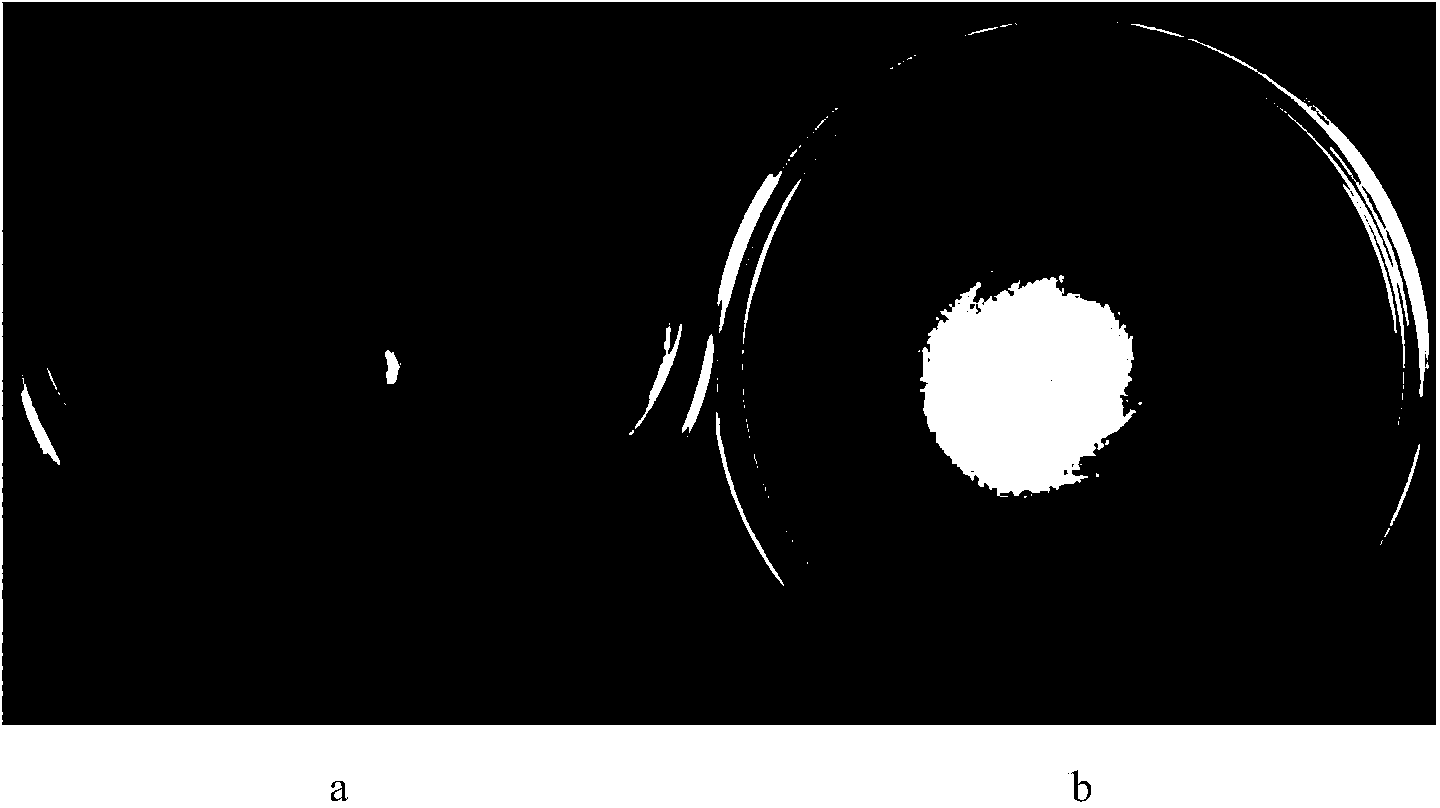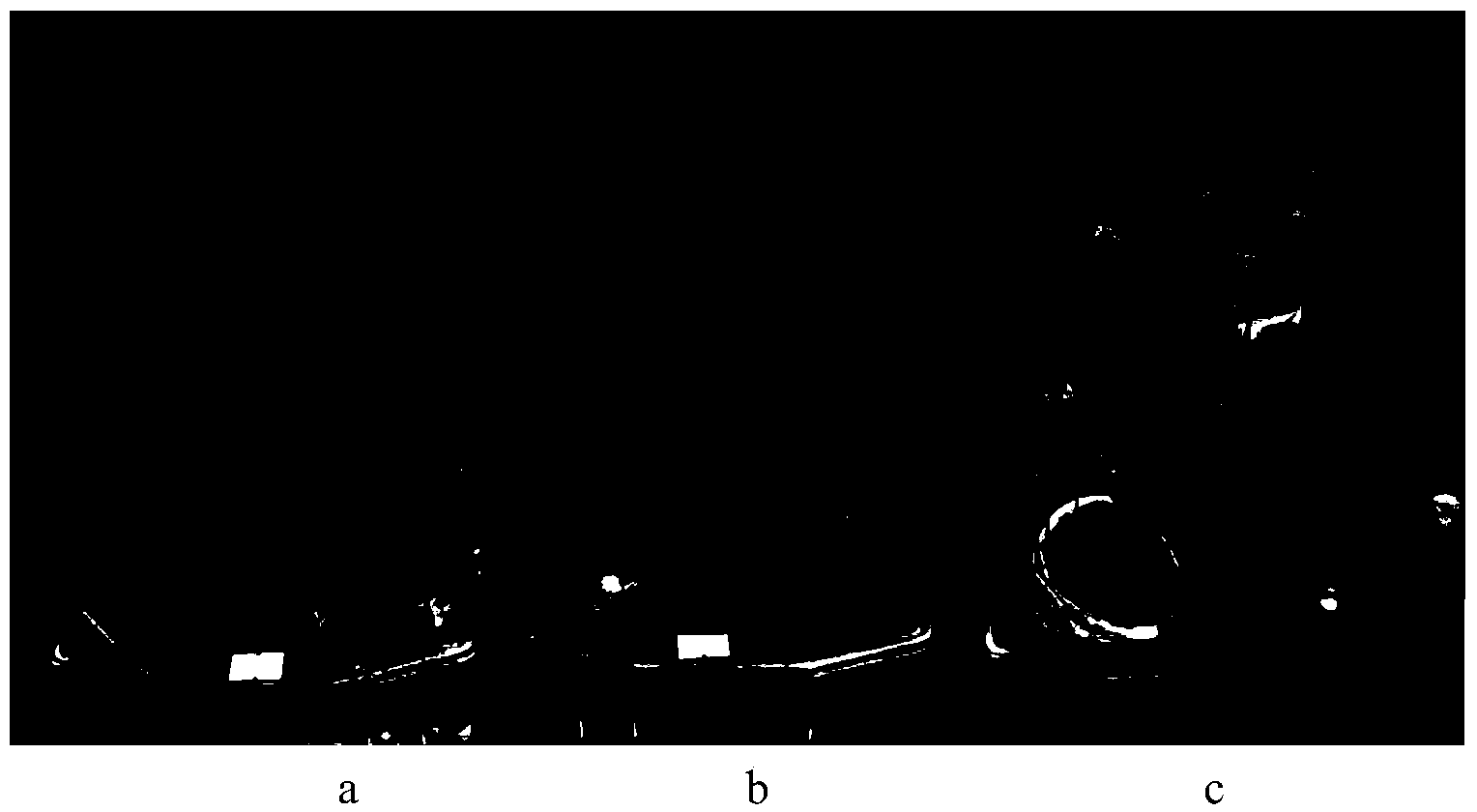Endophytic fungi CEF-193 of cotton and application thereof
A technology of CEF-193 and endophytic fungi, applied to endophytic fungus CEF-193 and its application fields, can solve the problems of poor cotton verticillium wilt effect, achieve good induction of immunity, and be conducive to mass reproduction and popularization and application Effect
- Summary
- Abstract
- Description
- Claims
- Application Information
AI Technical Summary
Problems solved by technology
Method used
Image
Examples
Embodiment 1
[0022] The isolation of embodiment 1 bacterial strain
[0023] (1) Sample collection
[0024] From June to August, healthy cotton plants were selected, and the middle and upper parts of the main stem and fruiting branches were taken 15 cm.
[0025] (2) Isolation of strains
[0026] First, the collected samples (cotton stalks) are washed with clear water, peeled off, placed in a sterilized petri dish with a diameter of 9 cm, and sterilized with 75% alcohol for 1 min. Then disinfect with 5.0% sodium hypochlorite for 60 seconds, and wash with sterilized water for 3 times, each time not less than 3 minutes. Then use sterilized absorbent paper to dry the water on the surface, cut into 0.4cm long pieces with sterilized scissors, place them in a 9cm petri dish, and incubate at 25°C. Use the last cleaning solution as a control to check whether the disinfection is thorough. Check the growth of endophytic fungi every day, and find that there are colonies growing out, and transfer th...
Embodiment 2
[0035] The inhibitory effect of embodiment 2CEF-193 on Verticillium dahliae of cotton
[0036] 1. Test method
[0037] Buckle cultivation method. Pour a certain amount of culture medium into the lid and bottom of the 90mm petri dish respectively, and the culture medium in the lid is slightly less. After solidification, insert 5 μl of Acremonium aromaticum CEF-193 bacterium liquid in the center of the dish cover (7 days of Chapi liquid culture), and inoculate 5 μl of Verticillium dahliae bacterial liquid in the center of the bottom of the dish (7 days of Chapi liquid culture). Put them into a constant temperature incubator at 25°C, and culture them upside down. Take the petri dish inoculated only with pathogenic bacteria as a control, and repeat each treatment 4 times. The growth status of the pathogenic bacteria and Acremonium aromaticum hyphae was observed every day, and the colony diameter of the pathogenic bacteria was measured by the cross method after 7 days of button c...
Embodiment 3
[0044] Example 3 CEF-193's Induced Immunity to Cotton Verticillium Wilt
[0045] 1. Test method
[0046] CEF-193 was cultured in Chapic liquid medium at 25°C and shaken in the dark for 7 days, filtered through filter paper, and the culture filtrate was obtained for seed soaking. The control strain Vd080 (strong pathogenic strain of Verticillium dahliae) was cultured in Chapic liquid medium at 25°C in the dark for 7 days with shaking, filtered through three layers of gauze, and the spore suspension was obtained for inoculation. Four treatments were set up in the experiment, respectively 25%, 50% and 100% CEF-193 culture filtrate and clear water soaking seeds. All four treatments were inoculated with conidia suspension of Verticillium dahliae Vd080 when a true leaf of cotton seedlings was flattened.
[0047] Mix the sterilized vermiculite and sand at a ratio of 6:4 to make a bottomless paper pot with a diameter of 6 cm, and place it in a plastic tray of 45 cm × 35 cm. The susc...
PUM
| Property | Measurement | Unit |
|---|---|---|
| diameter | aaaaa | aaaaa |
| diameter | aaaaa | aaaaa |
Abstract
Description
Claims
Application Information
 Login to View More
Login to View More - R&D
- Intellectual Property
- Life Sciences
- Materials
- Tech Scout
- Unparalleled Data Quality
- Higher Quality Content
- 60% Fewer Hallucinations
Browse by: Latest US Patents, China's latest patents, Technical Efficacy Thesaurus, Application Domain, Technology Topic, Popular Technical Reports.
© 2025 PatSnap. All rights reserved.Legal|Privacy policy|Modern Slavery Act Transparency Statement|Sitemap|About US| Contact US: help@patsnap.com



